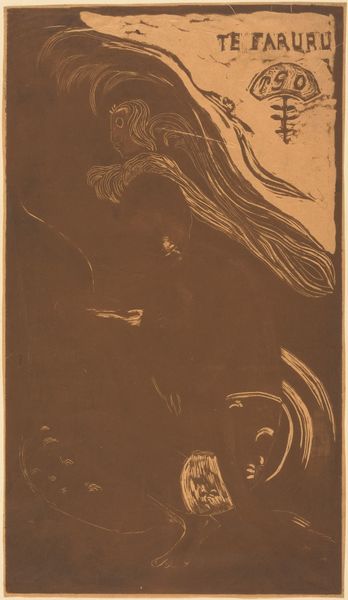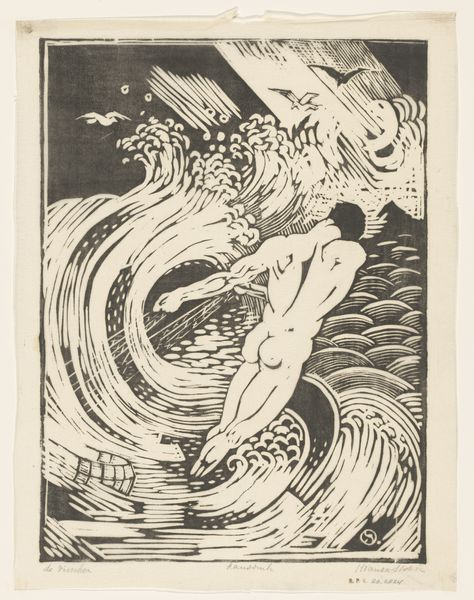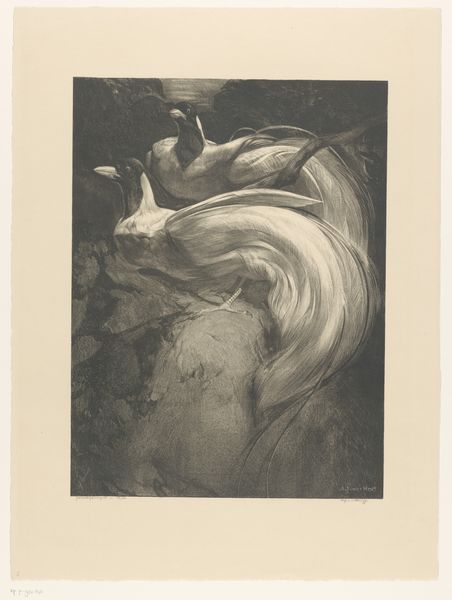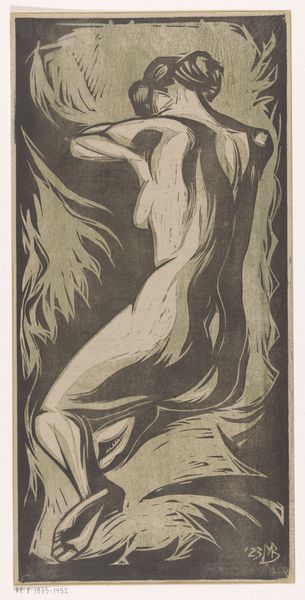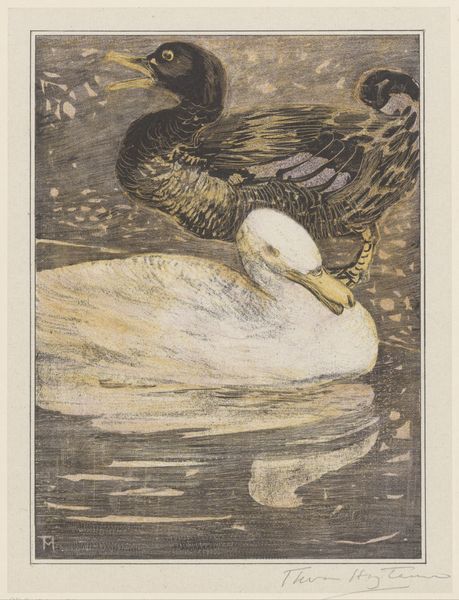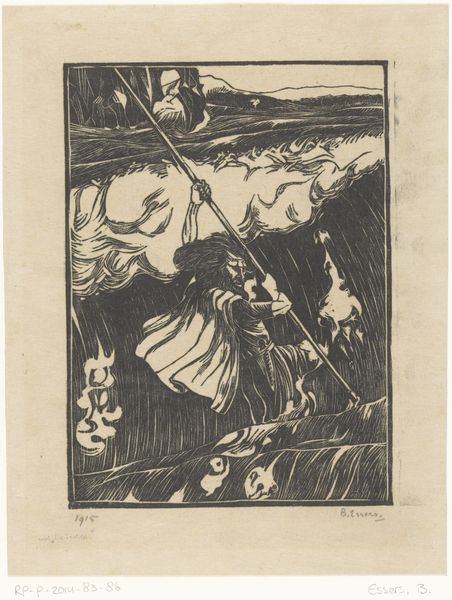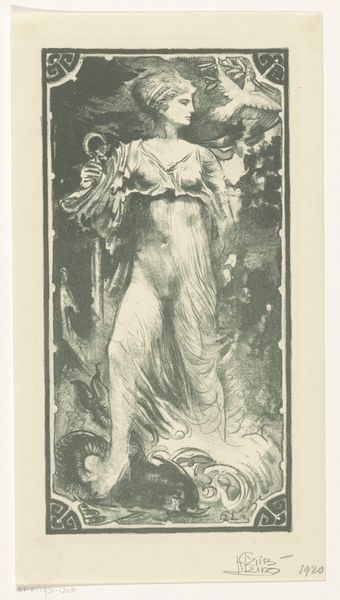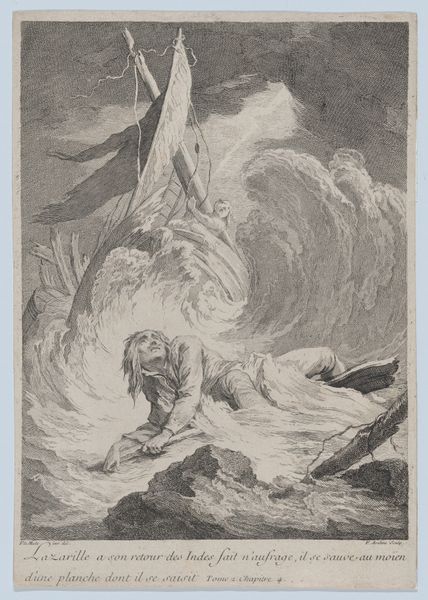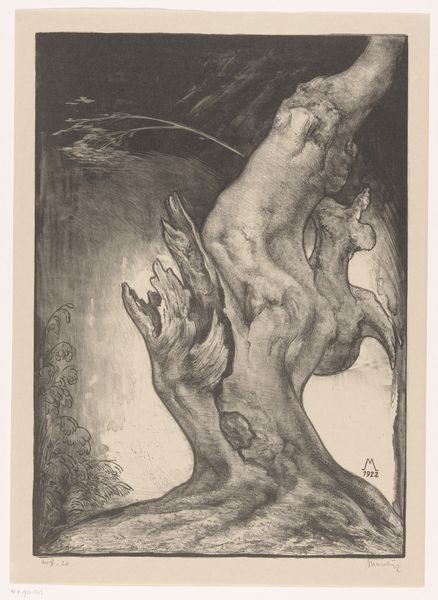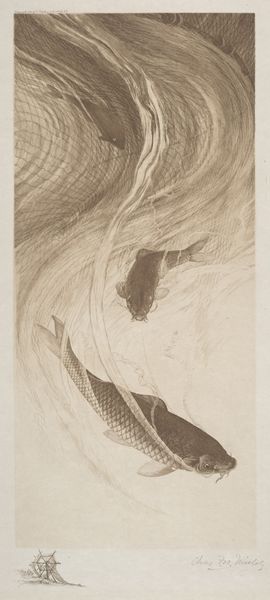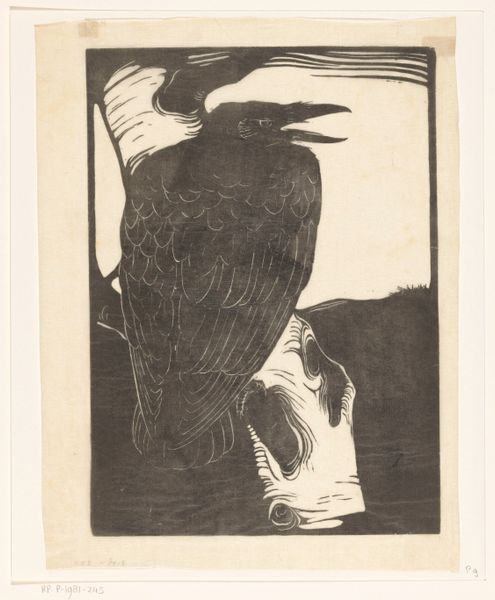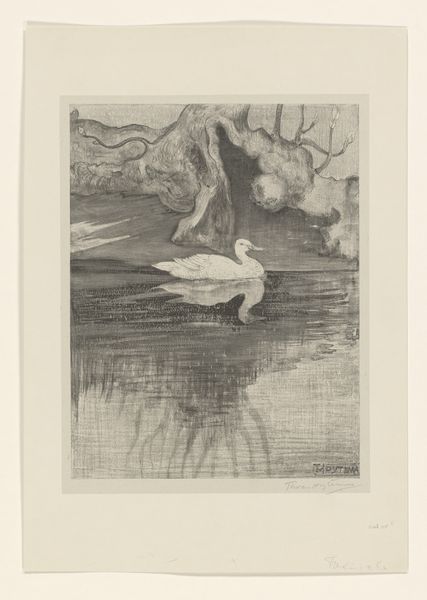
Dimensions: height 221 mm, width 168 mm, height 424 mm, width 303 mm
Copyright: Rijks Museum: Open Domain
Editor: We're looking at "Two Swimming Ducks" by Theo van Hoytema, created sometime between 1878 and 1909. It’s a linocut and pencil drawing. The muted tones create a sense of tranquility, but there's also something subtly melancholic about it, what do you make of it? Curator: It’s fascinating how Hoytema uses a seemingly simple image of ducks to perhaps comment on social structures of his time. Consider the period: the late 19th century saw rigid class divisions. Do you think the differing shades of the ducks might be a subtle commentary on societal strata, the 'haves' and 'have-nots,' existing in the same pond, the same world? Editor: That’s interesting. I was just focusing on the aesthetic qualities. I hadn’t considered a socio-political reading. Curator: Think about the broader context. The rise of industrialization led to increased disparities. The ‘landscape’—the social landscape—was changing dramatically. Hoytema, working in the Impressionist style, may have been subtly reflecting these tensions. The intimacy of the scene is misleading - whose pond are they swimming in? Editor: So you're suggesting that even a seemingly innocent depiction of nature can be charged with social meaning? It's like he’s observing a quiet, segregated tension. Curator: Exactly! Art doesn't exist in a vacuum. Hoytema's choice to depict these creatures, seemingly at peace but distinctly different, opens a dialogue about inclusion, exclusion, and the unspoken rules governing their shared environment. What is the symbolism of birds historically? How does he deviate? Editor: This has completely changed my perspective. I will never look at ducks the same way again. Thanks for broadening the boundaries of my vision. Curator: Indeed, seeing art as embedded in history makes for more insightful viewings!
Comments
No comments
Be the first to comment and join the conversation on the ultimate creative platform.
